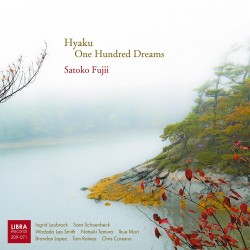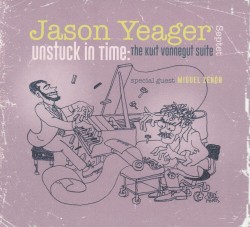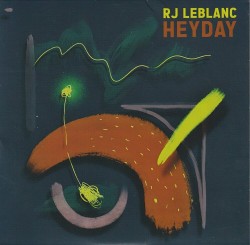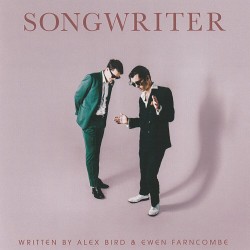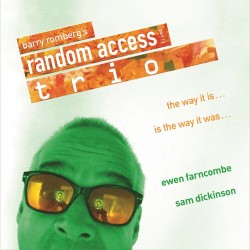Perhaps it’s related to the storied freedom of 1920s Paris where a Black entertainer like Josephine Baker could become a superstar, or the French pre-and-post Second World War intellectuals who wrote learnedly about jazz when it was still scorned in North America, but improvised music in France took longer to assert its own national identity than in other countries. With successive waves of foreign musicians making their homes there, local musicians became the most proficient Europeans playing styles ranging from Dixieland to Hard Bop. That has changed for the better since the 1970s. Since free jazz/improvised music accepted musical influences from all over, unique Gallic sounds began coming to the forefront. Folkloric influences from the countryside, advanced notated and electric/acoustic experiments and melodies from France’s former colonies became accepted. As these discs demonstrate, while it’s impossible to exactly define jazz from France, in its best iteration it’s certainly not an imitation of North American models.
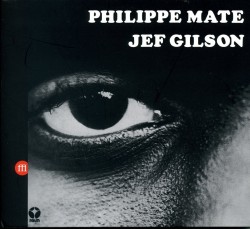 Along with others such as Jacques Thollot and François Tusques, keyboardist Jef Gilson (1926-2012) was one of the first Gallic musicians to incorporate free improvisations into straight-ahead jazz. However, by 1974 when Workshop (Souffle Continu FFL 075 CD soufflecontinurecords.com) was recorded, his music was individual since it was also influenced by the ethnic sounds Gilson had heard and played during an extended Madagascar sojourn. The two lengthy tracks here reflect that. On one hand co-leader alto saxophonist Philippe Maté (1939-2002), projects the multiphonic sweeps of spiritual free jazz while percussionists, bassists and keyboardists create a highly rhythmic underpinning that propels and accents the narratives. Bruno Di Gioia’s baying English horn adds another element to the extended Vision, while his and Maurice Bouhana’s dual flute interludes contribute Third World hues to both tracks, amplified by drum pounding, cow bell whacks, cymbal shaking and keyboard glissandi. The varied keyboards played by Gilson and Pierre Moret also serve as linkage between percussion rhythm and Maté’s unfettered free jazz. Moving among spiky bites, energetic overblowing and smeared multiphonics, the saxophonist’s output frequently ascends to prestissimo and staccato timbres. Juddering rumbles from one electric keyboard keeps the saxophonist from straying too far from the exposition in those cases, and Gilson’s jazz-inflected electric piano accents complement lyrical asides in the saxophonist’s more relaxed moments.
Along with others such as Jacques Thollot and François Tusques, keyboardist Jef Gilson (1926-2012) was one of the first Gallic musicians to incorporate free improvisations into straight-ahead jazz. However, by 1974 when Workshop (Souffle Continu FFL 075 CD soufflecontinurecords.com) was recorded, his music was individual since it was also influenced by the ethnic sounds Gilson had heard and played during an extended Madagascar sojourn. The two lengthy tracks here reflect that. On one hand co-leader alto saxophonist Philippe Maté (1939-2002), projects the multiphonic sweeps of spiritual free jazz while percussionists, bassists and keyboardists create a highly rhythmic underpinning that propels and accents the narratives. Bruno Di Gioia’s baying English horn adds another element to the extended Vision, while his and Maurice Bouhana’s dual flute interludes contribute Third World hues to both tracks, amplified by drum pounding, cow bell whacks, cymbal shaking and keyboard glissandi. The varied keyboards played by Gilson and Pierre Moret also serve as linkage between percussion rhythm and Maté’s unfettered free jazz. Moving among spiky bites, energetic overblowing and smeared multiphonics, the saxophonist’s output frequently ascends to prestissimo and staccato timbres. Juddering rumbles from one electric keyboard keeps the saxophonist from straying too far from the exposition in those cases, and Gilson’s jazz-inflected electric piano accents complement lyrical asides in the saxophonist’s more relaxed moments.
 Jump forward almost five decades and this electro/acoustic mixture is also expressed by 40-year-old pianist Eve Risser. Except in this case the polyrhythmic weaving expressed by her eight-part suite on Eurythmia (Clean Feed CF 609 CD cleanfeed-records.com) is interpreted by the 12-piece Red Desert Orchestra instead of Gilson’s septet. Its classic sound is achieved by adding specific modulations played by African and Levantine qarqabas, balafons, djembes and baras to the orchestra’s Western electric and acoustic instruments. Although some of the tracks are more so-called European and some more so-called ethnic, creative melding is the most prominent take away. In fact, it’s the concluding Soyayya which puts this in the boldest relief. Picking up the relentless percussion beats of the previous track, with dancing cross rhythms and balafon strokes most prominent, harmonized riffs from the five-piece horn section are heard as speckled electronic oscillations also come to the fore. As the percussion pops and shakes continue, Antonin-Tri Hoang’s alto saxophone takes apart and reconnects the theme with fluttering squeals. Finally, these and other textures fade into Tatiana Paris’ lyrical guitar coda. Later her voice along with Risser’s harmonize with the reeds on Desert Rouge providing balance to the bent notes and multiple cross rhythms from the percussionists, while trumpeter Nils Ostendorf and trombonist Mathias Müller blow mariachi-like triplets that settle on top of the undulating groove. Ever present, the surging percussion raps are prominent throughout the disc. Yet between pianist Risser’s carefully positioned repeated patterns and chording control, the performances are prevented from becoming techno-trance music. Furthermore, in spite of standout solos, especially from Müller on Gämse, which blasts up the scale and down again with an emphasized collection of half-valve slurs, slides, shakes and plunger grumbles, Eurythmia never becomes a singular jazz-improv session, but inhabits its own idiosyncratic niche.
Jump forward almost five decades and this electro/acoustic mixture is also expressed by 40-year-old pianist Eve Risser. Except in this case the polyrhythmic weaving expressed by her eight-part suite on Eurythmia (Clean Feed CF 609 CD cleanfeed-records.com) is interpreted by the 12-piece Red Desert Orchestra instead of Gilson’s septet. Its classic sound is achieved by adding specific modulations played by African and Levantine qarqabas, balafons, djembes and baras to the orchestra’s Western electric and acoustic instruments. Although some of the tracks are more so-called European and some more so-called ethnic, creative melding is the most prominent take away. In fact, it’s the concluding Soyayya which puts this in the boldest relief. Picking up the relentless percussion beats of the previous track, with dancing cross rhythms and balafon strokes most prominent, harmonized riffs from the five-piece horn section are heard as speckled electronic oscillations also come to the fore. As the percussion pops and shakes continue, Antonin-Tri Hoang’s alto saxophone takes apart and reconnects the theme with fluttering squeals. Finally, these and other textures fade into Tatiana Paris’ lyrical guitar coda. Later her voice along with Risser’s harmonize with the reeds on Desert Rouge providing balance to the bent notes and multiple cross rhythms from the percussionists, while trumpeter Nils Ostendorf and trombonist Mathias Müller blow mariachi-like triplets that settle on top of the undulating groove. Ever present, the surging percussion raps are prominent throughout the disc. Yet between pianist Risser’s carefully positioned repeated patterns and chording control, the performances are prevented from becoming techno-trance music. Furthermore, in spite of standout solos, especially from Müller on Gämse, which blasts up the scale and down again with an emphasized collection of half-valve slurs, slides, shakes and plunger grumbles, Eurythmia never becomes a singular jazz-improv session, but inhabits its own idiosyncratic niche.
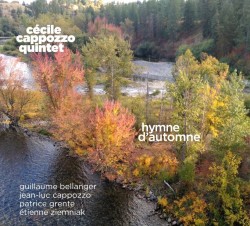 More attuned to expected improvisation is the quintet of pianist Cécile Cappozzo on Hymne d’automne (Ayler aylCD 179 ayler.com), six tracks which blend into one another to make a suite. With the rare ability to compose tunes that are both dulcet and daring – often on the same track – Cappozzo’s themes are interpreted by tenor saxophonist Guillaume Bellanger, bassist Patrice Grente, drummer Etienne Ziemniak and her father, trumpeter Jean-Luc Cappozzo. Not that there’s any nepotism or favouritism here. The elder Cappozzo, who in the past has collaborated with other pioneering French improvisers like Daunik Lazro, is versatile enough to efficiently put his daughter’s ideas into action. Often, as on the title track, the two Cappozzos outline a skeleton theme consisting of single-note keyboard clips and portamento brass grace notes only to have the rest of the band interject flamboyant dissonance in the form of reed slides into flattement and blunt pops and smacks from the bassist and drummer. As the exposition turns energetic, Jean-Luc Cappozzo joins the fray with emphasized triplets and flutters in counterpoint to Bellanger’s strained mid-range split tones until guitar-like strums from Grente return the performance to a reflective narrative. This strategy continues throughout, culminating with the concluding Hymne d’automne (reprise). In that case, rapid drum paradiddles and breaks introduce the meeting of the trumpeter’s triplet peeps with the saxophonist’s slap tonguing and reed bites. Finally, a calming piano portion doubled by bass string pumps moves the players to a moderated sequence that also reprises the title track’s reflective beginning. Don’t assume that Cécile Cappozzo is deferring to the elders, however. On the extended Dance what elsewhere is emphasized as processional comping almost immediately turns into a kaleidoscope of arching piano chords and dense key clips. Eventually she propels the narrative to a stop-time swing feel, toughened by drum breaks. In the horn responses, including downward flowing reed multiphonics and half-valve growls, her lyrical glissandi mean the tune retains a relaxed Sunday-in-the-park feeling despite the dissonance sprayed around its resolution.
More attuned to expected improvisation is the quintet of pianist Cécile Cappozzo on Hymne d’automne (Ayler aylCD 179 ayler.com), six tracks which blend into one another to make a suite. With the rare ability to compose tunes that are both dulcet and daring – often on the same track – Cappozzo’s themes are interpreted by tenor saxophonist Guillaume Bellanger, bassist Patrice Grente, drummer Etienne Ziemniak and her father, trumpeter Jean-Luc Cappozzo. Not that there’s any nepotism or favouritism here. The elder Cappozzo, who in the past has collaborated with other pioneering French improvisers like Daunik Lazro, is versatile enough to efficiently put his daughter’s ideas into action. Often, as on the title track, the two Cappozzos outline a skeleton theme consisting of single-note keyboard clips and portamento brass grace notes only to have the rest of the band interject flamboyant dissonance in the form of reed slides into flattement and blunt pops and smacks from the bassist and drummer. As the exposition turns energetic, Jean-Luc Cappozzo joins the fray with emphasized triplets and flutters in counterpoint to Bellanger’s strained mid-range split tones until guitar-like strums from Grente return the performance to a reflective narrative. This strategy continues throughout, culminating with the concluding Hymne d’automne (reprise). In that case, rapid drum paradiddles and breaks introduce the meeting of the trumpeter’s triplet peeps with the saxophonist’s slap tonguing and reed bites. Finally, a calming piano portion doubled by bass string pumps moves the players to a moderated sequence that also reprises the title track’s reflective beginning. Don’t assume that Cécile Cappozzo is deferring to the elders, however. On the extended Dance what elsewhere is emphasized as processional comping almost immediately turns into a kaleidoscope of arching piano chords and dense key clips. Eventually she propels the narrative to a stop-time swing feel, toughened by drum breaks. In the horn responses, including downward flowing reed multiphonics and half-valve growls, her lyrical glissandi mean the tune retains a relaxed Sunday-in-the-park feeling despite the dissonance sprayed around its resolution.
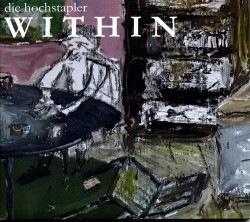 Just as French chefs added new ingredients to create nouvelle cuisine and other forward-looking fare, so a group like Die Hochstapler does so with its music on Within (Umlaut TSCD3 umlautrecords.com). The reason for the German name, translated as The Impostors, is that Italian bassist Antonio Borghini and German drummer/vibist Hannes Lingens live in Berlin where these two instant compositions were recorded. Meanwhile, the front line of alto saxophonist Pierre Borel and Louis Laurain, who contributes trumpet, bird calls and vocal sounds, are as French as Camembert. Although the lineup is consistent with contemporary jazz groups, the POMO mélange the quartet creates bounces along echoing Free Jazz, classic jazz, jazz-rock, bebop and touches of swing at various tempos without losing the linear thread. Often moving in and out of focus, each member is spotlighted. For instance, Borghini, responsible for bouncy, andante tracking throughout, has a string thumb pop and walking bass line feature on Part 2 backed by aviary cackles from the horns. On the same piece Lingens uses backbeats, ruffs and rim shots to harmonize with the others, who begin the piece with rhythmic hand clapping and later intensify the bop quotes from soloists. Leaving his aviary excursions to a minimum, Laurain usually expresses himself with half-valve intensity or ornate triplets, with quotes as likely to reference Dixieland warhorse When The Saints… as Ornette Coleman’s Focus on Sanity. Usually though his elevated peeps and plunger tones move in a linear fashion and dovetail into Borel’s reed expression. This is particularly notable during Part 1, when following a continuous drone of sax honks and brass triplets, the two slow the pace and for 60 seconds, minutely examine every tone variable possible. As for Borel, whether it’s speedy bebop riffs or hearty Jazz-Rock-like quotes, his flutter tonguing, honks and altissimo smears always lock into the overall groove, even if he has to project and thicken tongue slaps to prod bird-call squeaks into cohesion. It may have German and Italian spicing but overall Within becomes a perfect French dish.
Just as French chefs added new ingredients to create nouvelle cuisine and other forward-looking fare, so a group like Die Hochstapler does so with its music on Within (Umlaut TSCD3 umlautrecords.com). The reason for the German name, translated as The Impostors, is that Italian bassist Antonio Borghini and German drummer/vibist Hannes Lingens live in Berlin where these two instant compositions were recorded. Meanwhile, the front line of alto saxophonist Pierre Borel and Louis Laurain, who contributes trumpet, bird calls and vocal sounds, are as French as Camembert. Although the lineup is consistent with contemporary jazz groups, the POMO mélange the quartet creates bounces along echoing Free Jazz, classic jazz, jazz-rock, bebop and touches of swing at various tempos without losing the linear thread. Often moving in and out of focus, each member is spotlighted. For instance, Borghini, responsible for bouncy, andante tracking throughout, has a string thumb pop and walking bass line feature on Part 2 backed by aviary cackles from the horns. On the same piece Lingens uses backbeats, ruffs and rim shots to harmonize with the others, who begin the piece with rhythmic hand clapping and later intensify the bop quotes from soloists. Leaving his aviary excursions to a minimum, Laurain usually expresses himself with half-valve intensity or ornate triplets, with quotes as likely to reference Dixieland warhorse When The Saints… as Ornette Coleman’s Focus on Sanity. Usually though his elevated peeps and plunger tones move in a linear fashion and dovetail into Borel’s reed expression. This is particularly notable during Part 1, when following a continuous drone of sax honks and brass triplets, the two slow the pace and for 60 seconds, minutely examine every tone variable possible. As for Borel, whether it’s speedy bebop riffs or hearty Jazz-Rock-like quotes, his flutter tonguing, honks and altissimo smears always lock into the overall groove, even if he has to project and thicken tongue slaps to prod bird-call squeaks into cohesion. It may have German and Italian spicing but overall Within becomes a perfect French dish.
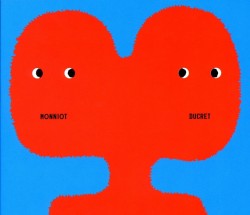 So too does Dernier Tango (Jazzdor Series 13 jazzdor.com). Yet while the repast is the product of only two cooks, alto/baritone saxophonist Christophe Monniot and guitarist Marc Ducret, there are enough local and international ingredients during its 12 tracks for musical nourishment. Eschewing the controversial eroticism of Bernardo Bertolucci’s 1972 film, the two still project a bouncy dance beat, not only on the title track, but on other numbers where syncopation lightens the performance. Ducret’s this-side-of-metal harsh flanges and jagged runs are emphasized on tunes such as Chant/Son and Back Train with various motifs in the exposition. Meantime, Monniot, who at one point was a member of l’Orchestre National de Jazz, knows exactly how to accentuate the compositions, either with broken chord vibrations from the alto or scooping continuum from the baritone sax. He does both in sequence on many tracks, preserving the storytelling in counterpoint to the guitarist’s up and down clangs and flanges. Most of the time however, as demonstrated on the introductory Yes Igor and the brief concluding La Lettre du Caire, his intersectional reed vamps and flattement travel in lockstep with guitar fuzztones and hardened strums. In these cases and elsewhere the result is a moderated ending. Quiet connection is often ascendent as well. The best illustration of this is on A Sign of Mood, where Ducret’s folksy frailing on 12-string guitar is decelerated in tempo by reed scoops, leading to a melding of sonic strands.
So too does Dernier Tango (Jazzdor Series 13 jazzdor.com). Yet while the repast is the product of only two cooks, alto/baritone saxophonist Christophe Monniot and guitarist Marc Ducret, there are enough local and international ingredients during its 12 tracks for musical nourishment. Eschewing the controversial eroticism of Bernardo Bertolucci’s 1972 film, the two still project a bouncy dance beat, not only on the title track, but on other numbers where syncopation lightens the performance. Ducret’s this-side-of-metal harsh flanges and jagged runs are emphasized on tunes such as Chant/Son and Back Train with various motifs in the exposition. Meantime, Monniot, who at one point was a member of l’Orchestre National de Jazz, knows exactly how to accentuate the compositions, either with broken chord vibrations from the alto or scooping continuum from the baritone sax. He does both in sequence on many tracks, preserving the storytelling in counterpoint to the guitarist’s up and down clangs and flanges. Most of the time however, as demonstrated on the introductory Yes Igor and the brief concluding La Lettre du Caire, his intersectional reed vamps and flattement travel in lockstep with guitar fuzztones and hardened strums. In these cases and elsewhere the result is a moderated ending. Quiet connection is often ascendent as well. The best illustration of this is on A Sign of Mood, where Ducret’s folksy frailing on 12-string guitar is decelerated in tempo by reed scoops, leading to a melding of sonic strands.
With the varieties of jazz and improvised music now as numerous as there are types of wine, it’s impossible to delineate one particular French style. One thing is certain however: a dependence on North American idioms is part of the past.
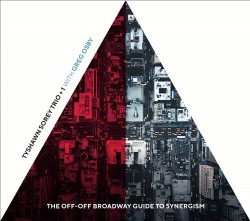 The Off-Off Broadway Guide to Synergism
The Off-Off Broadway Guide to Synergism

